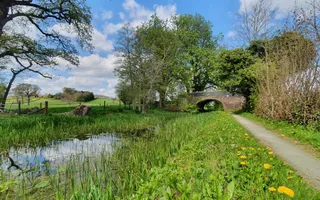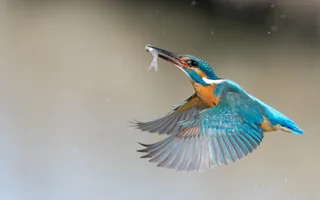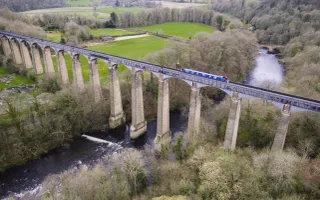In April, the latest phase of our restoration of the Montgomery Canal began, funded by the the government’s Levelling Up Fund secured in 2021. The work, to revive a 4.4-mile stretch of the canal between Llanymynech and Arddleen, which hasn’t been navigable since the 1930s, will give biodiversity in the area a huge boost.
Restoring nature on the Monty
We take a look at how our restoration work on the Montgomery Canal is helping to protect rare plants and open up natural homes and highways for wildlife.


The Montgomery Canal, known affectionately as ‘the Monty’, is a Site of Special Scientific Interest (SSSI), and boasts a truly unique ecosystem. Rare aquatic plants, such as floating water-plantain and grass-wrack pondweed thrive here, while the verdant banks provide ideal habitat for a variety of animal species.
As our local ecologist, Tom King explains: “The canal is primarily designated as a Site of Special Scientific Interest because of its diverse collection of aquatic plants; but it’s also home to a fascinating array of wildlife, with dragonflies and damselflies, aquatic beetles, mussels, clams, bats, and kingfishers.”

Once a vital tributary for local trade, the Montgomery Canal was closed to traffic in 1944, not long after a major breach near the aqueduct of the River Perry. Although restoration efforts began as early as the 1960s, large sections of the canal remained untouched well into the 21st century. In the intervening years, nature took over, and in the absence of human encroachment, a variety of aquatic plants, rarely seen in other parts of the country, gained a foothold.
But it’s a delicate balancing act. Left to its own devices, the canal has become overrun with competitive plants and reeds, trapping silt in the canal and crowding out smaller, rarer aquatic species, like floating water-plantain. Over time, these precious wetlands have become little more than dried-out channels, overgrown with plants and trees.

Large sections of the 4.4-mile stretch from Llanymynech to Arddleen are already heavily silted, with water quality further compromised by nutrient-rich run-off waters. To preserve these important wetlands, so crucial for the survival of local flora and fauna, we’ll be delivering a raft of works. This will include extensive winter dredging to remove a one-metre thick layer of silt and cutting back encroaching vegetation, and creating several hectares of nature reserves.
As Tom explains, the project will have a huge knock-on effect for local plant and animal life: “In terms of the whole ecosystem, the works will create a much cleaner, more oxygen-rich canal, which will be better for the fish, which in turn will be better for the aquatic plants, which again, will allow the insects, birds, and mammals to thrive.”
Like similar projects happening across the country, the work on the Monty will help to establish safe homes for endangered plants and animals along the canal, creating natural highways and connecting up isolated habitats.

As Tom tells us: “Canals act as an important framework for ecosystems, cutting across landscapes and connecting up different habitats. So, for example, they might allow a species living naturally in a rural area in Wales to move into a more urban environment, enabling them to establish new habitats and populations, which would be impossible without our canal network.”
Biodiverse homes and highways, like the ones we’re creating along the Montgomery Canal, are crucial for the survival of some of our country’s rarest and most critically endangered species.
With your help, we hope to roll out projects like these up and down the country, linking up remote habitats and creating thriving homes for nature across our network.
Last Edited: 17 July 2024


Stay connected
Sign up to our newsletter and discover how we protect canals and help nature thrive

